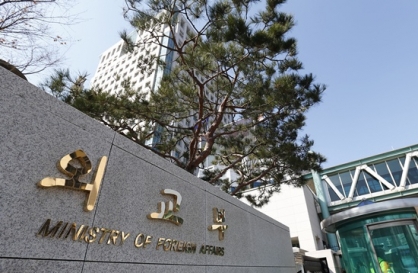New Books
Last installment of ‘Child 44’ trilogy disappoints
Agent 6
By Tom Rob Smith
(Hachette)
There are two books fighting for attention in Tom Rob Smith‘s latest novel, and the fact that one of them is fairly compelling isn’t enough to prevent “Agent 6” from becoming something of a mess. The third and final work in what has been up to this point a bracing, original series, “Agent 6” turns out to be a disappointment. It‘s overcrowded with plotlines and stretches over too long of a timeline to sustain any narrative momentum. Worse, it’s at least one story short of satisfying resolution.
Smith‘s debut, “Child 44” -- about a security officer in Stalin’s Russia who uncovers the grisly work of a child murderer -- was a refreshing change from the legions of serial-killer novels clogging the bestseller lists. The book features the required dogged investigator and ruthless villain, but the unusual setting made all the difference: In a rigid, paranoid world that refuses to admit that murder exists, even an idealist and celebrated war hero like Leo Demidov can‘t obey his duty to the state when it clashes so violently with his conscience.
“Child 44” exploits that concept to perfection: As Leo encounters more and more resistance to his theory that a serial killer is targeting children all over Russia, his allegiance to the Soviet Union begins to waver. The second book in the series, “The Secret Speech,” continues that intriguing thread with Leo now aware of his country’s hypocrisies and horrors. His eyes have been opened, but there‘s nowhere to go. He has no choice but to operate within the system.
A few flashbacks aside, “Agent 6” finds Leo in 1965, preparing himself emotionally for separation from his wife, Raisa, and their two almost-grown adopted daughters. Raisa and the girls are part of a Soviet group visiting New York to perform a concert aimed at cooling Cold War tensions. Leo, no longer a government agent, is not allowed to travel with them, and he’s uneasy about them leaving after he finds a diary belonging to one of the girls. Some training you never shake. A journal is trouble, an indication of an unquiet heart. After all, “(t)he safest way to write a diary was to imagine Stalin reading every word.” Even when Stalin‘s dead.
So Raisa and the girls head west, with terrible results. A plot involving the concert, the visiting Russians and American socialist singer Jesse Austin, a once-popular star hounded into obscurity and poverty by an obsessive FBI agent, has tragic consequences for the family. Most of the first half of the book sets up the particulars of this event, but the chaos, when it happens, hardly comes as a surprise. Even more strange is Smith’s drawing of comparisons between the duplicity of the FBI and the Soviet Union. In the 1960s the U.S. government surely had its unpleasant secrets, but they hardly compare with the collected atrocities of the KGB, the deprivations of the gulag system or Stalin‘s 20 million murdered countrymen.
The second half of “Agent 6,” in which a grieving, dissolute Leo is shipped off to Kabul as an adviser in 1980, is better. (There are a few fitful short chapters in between which exist solely to show us the passage of time, another irritant.) Hindsight allows us to understand what a disaster the Soviet invasion of Afghanistan was, of course, so the Russians’ mistakes are not surprising. But the Kabul setting allows Smith to pull off the book‘s best scenes, as Leo finds himself paired with a young Afghan trainee, Nara, whose complicity with the Soviets sends tensions flaring. Smith had more than enough material for an entire book here, but he leaves many avenues unexplored, one of the most interesting the wrenching dilemma Nara feels at betraying a religiously fanatic homeland that refuses to consider her the equal of a man.
Eventually, Leo finds his way back to New York to keep a promise -- that he would investigate the crimes of 1965 -- but it’s too little, too late. The answers he gets aren‘t worth the wait. Had Smith structured the entire book around Kabul, around the cynical Leo finding his conscience again and Nara trying to choose a life between the lesser of two evils, “Agent 6” might have been an interesting portrait of war-ravaged souls. As it is, the novel ends what could have been a great series on a note of impatience and frustration. Leo -- and Smith’s fans -- deserved better. (MCT)
Scroll through this treasure trove of Chinese history
Qingming Shang He Tu or Scenes along the River during the Qingming Festival
By Zhang Zeduan
(Better Link Press, Shanghai / Tuttle Publishing, VT)
A Chinese treasure, the “Qingming Shan He Tu” or “Scenes along the River during the Qingming Festival” scroll, can now be seen by all.
The Better Link Press‘ book reproduction gives those with an interest in Chinese history a chance to enjoy this work of art now kept safely in the Palace Museum in Beijing.
The scroll looks back almost a thousand years ago to the then-capital of China, the sophisticated city of Bianjing (now Kaifeng in central China). The occasion is the Qingming Festival, a spring holiday when the Chinese visit to tend their ancestors’ graves.
The ink drawings are a day in the life of Bianjing from its outskirts to the heart of the city. It starts on the banks of the river, enters the town, and ends with the watchtower. You‘d have to squint at the original to see all this detail, if you got a chance to see the scroll at all. This book is a delight.
The artist and author Zhang Zeduan was a court painter for Emperor Huizong of the Song dynasty, in the early 1100s, roughly around time of Second Crusade in the West.
In “Scenes along the River during the Qingming Festival” by Zhang Zeuan, the author has reproduced the 16-foot scroll in a unique fashion. The pages of “Scenes” unfold like a scroll. Readers lift out the first page and find that it’s one long sheet of paper, a continuous story.
Below the reproduction of the scroll are clarifying footnotes. For example, on one page there is a stone boat, a woman on horseback, and a restaurant. Below the picture is the explanation: “The restaurant is located right on the river, with a balcony supported by posts overhanging the water. Tables and benches are set up on the balcony. The balcony not only expands the business area but is also handy for customers on boats and has the added benefit of a view. At the entrance of the restaurant to attract customers an employee is putting up color flags and banners with a bamboo post.”
The exquisitely drawn town bustles with commerce with numerous restaurants, shops where banners proclaim their use -- herb shop, carpenters -- and a huge gate tower. Boats ply their trade up and down the river carrying goods. Children peep over walls at neighboring courtyards. A man sells sugar cane to a woman with a child. There are roughly 500 people drawn laughing, eating, offering advice to the boatmen.
The book reproduces the scroll‘s end pages replete with “chops” or seals of the various owners, including the last emperor of China, Pu-yi.
There are comments from a thousand years of owners. Poets from the Jin Dynasty (1115 to 1234 A.D.) onward comment on the vibrancy of the painting of the lost capital -- “The once bustling city is now reduced to rubble in war and strife” -- and deplore its loss.
The most glaring mistake the publisher has made is the lack of a date chart of the Chinese dynasties for those who are unfamiliar with them. It should have been included at the front.
While this book may have a limited audience, it’s a rich treasure trove for anyone interested in Chinese art and history. (MCT)
Last installment of ‘Child 44’ trilogy disappoints
Agent 6
By Tom Rob Smith
(Hachette)
There are two books fighting for attention in Tom Rob Smith‘s latest novel, and the fact that one of them is fairly compelling isn’t enough to prevent “Agent 6” from becoming something of a mess. The third and final work in what has been up to this point a bracing, original series, “Agent 6” turns out to be a disappointment. It‘s overcrowded with plotlines and stretches over too long of a timeline to sustain any narrative momentum. Worse, it’s at least one story short of satisfying resolution.
Smith‘s debut, “Child 44” -- about a security officer in Stalin’s Russia who uncovers the grisly work of a child murderer -- was a refreshing change from the legions of serial-killer novels clogging the bestseller lists. The book features the required dogged investigator and ruthless villain, but the unusual setting made all the difference: In a rigid, paranoid world that refuses to admit that murder exists, even an idealist and celebrated war hero like Leo Demidov can‘t obey his duty to the state when it clashes so violently with his conscience.
“Child 44” exploits that concept to perfection: As Leo encounters more and more resistance to his theory that a serial killer is targeting children all over Russia, his allegiance to the Soviet Union begins to waver. The second book in the series, “The Secret Speech,” continues that intriguing thread with Leo now aware of his country’s hypocrisies and horrors. His eyes have been opened, but there‘s nowhere to go. He has no choice but to operate within the system.
A few flashbacks aside, “Agent 6” finds Leo in 1965, preparing himself emotionally for separation from his wife, Raisa, and their two almost-grown adopted daughters. Raisa and the girls are part of a Soviet group visiting New York to perform a concert aimed at cooling Cold War tensions. Leo, no longer a government agent, is not allowed to travel with them, and he’s uneasy about them leaving after he finds a diary belonging to one of the girls. Some training you never shake. A journal is trouble, an indication of an unquiet heart. After all, “(t)he safest way to write a diary was to imagine Stalin reading every word.” Even when Stalin‘s dead.
So Raisa and the girls head west, with terrible results. A plot involving the concert, the visiting Russians and American socialist singer Jesse Austin, a once-popular star hounded into obscurity and poverty by an obsessive FBI agent, has tragic consequences for the family. Most of the first half of the book sets up the particulars of this event, but the chaos, when it happens, hardly comes as a surprise. Even more strange is Smith’s drawing of comparisons between the duplicity of the FBI and the Soviet Union. In the 1960s the U.S. government surely had its unpleasant secrets, but they hardly compare with the collected atrocities of the KGB, the deprivations of the gulag system or Stalin‘s 20 million murdered countrymen.
The second half of “Agent 6,” in which a grieving, dissolute Leo is shipped off to Kabul as an adviser in 1980, is better. (There are a few fitful short chapters in between which exist solely to show us the passage of time, another irritant.) Hindsight allows us to understand what a disaster the Soviet invasion of Afghanistan was, of course, so the Russians’ mistakes are not surprising. But the Kabul setting allows Smith to pull off the book‘s best scenes, as Leo finds himself paired with a young Afghan trainee, Nara, whose complicity with the Soviets sends tensions flaring. Smith had more than enough material for an entire book here, but he leaves many avenues unexplored, one of the most interesting the wrenching dilemma Nara feels at betraying a religiously fanatic homeland that refuses to consider her the equal of a man.
Eventually, Leo finds his way back to New York to keep a promise -- that he would investigate the crimes of 1965 -- but it’s too little, too late. The answers he gets aren‘t worth the wait. Had Smith structured the entire book around Kabul, around the cynical Leo finding his conscience again and Nara trying to choose a life between the lesser of two evils, “Agent 6” might have been an interesting portrait of war-ravaged souls. As it is, the novel ends what could have been a great series on a note of impatience and frustration. Leo -- and Smith’s fans -- deserved better. (MCT)
Scroll through this treasure trove of Chinese history
Qingming Shang He Tu or Scenes along the River during the Qingming Festival
By Zhang Zeduan
(Better Link Press, Shanghai / Tuttle Publishing, VT)
A Chinese treasure, the “Qingming Shan He Tu” or “Scenes along the River during the Qingming Festival” scroll, can now be seen by all.
The Better Link Press‘ book reproduction gives those with an interest in Chinese history a chance to enjoy this work of art now kept safely in the Palace Museum in Beijing.
The scroll looks back almost a thousand years ago to the then-capital of China, the sophisticated city of Bianjing (now Kaifeng in central China). The occasion is the Qingming Festival, a spring holiday when the Chinese visit to tend their ancestors’ graves.
The ink drawings are a day in the life of Bianjing from its outskirts to the heart of the city. It starts on the banks of the river, enters the town, and ends with the watchtower. You‘d have to squint at the original to see all this detail, if you got a chance to see the scroll at all. This book is a delight.
The artist and author Zhang Zeduan was a court painter for Emperor Huizong of the Song dynasty, in the early 1100s, roughly around time of Second Crusade in the West.
In “Scenes along the River during the Qingming Festival” by Zhang Zeuan, the author has reproduced the 16-foot scroll in a unique fashion. The pages of “Scenes” unfold like a scroll. Readers lift out the first page and find that it’s one long sheet of paper, a continuous story.
Below the reproduction of the scroll are clarifying footnotes. For example, on one page there is a stone boat, a woman on horseback, and a restaurant. Below the picture is the explanation: “The restaurant is located right on the river, with a balcony supported by posts overhanging the water. Tables and benches are set up on the balcony. The balcony not only expands the business area but is also handy for customers on boats and has the added benefit of a view. At the entrance of the restaurant to attract customers an employee is putting up color flags and banners with a bamboo post.”
The exquisitely drawn town bustles with commerce with numerous restaurants, shops where banners proclaim their use -- herb shop, carpenters -- and a huge gate tower. Boats ply their trade up and down the river carrying goods. Children peep over walls at neighboring courtyards. A man sells sugar cane to a woman with a child. There are roughly 500 people drawn laughing, eating, offering advice to the boatmen.
The book reproduces the scroll‘s end pages replete with “chops” or seals of the various owners, including the last emperor of China, Pu-yi.
There are comments from a thousand years of owners. Poets from the Jin Dynasty (1115 to 1234 A.D.) onward comment on the vibrancy of the painting of the lost capital -- “The once bustling city is now reduced to rubble in war and strife” -- and deplore its loss.
The most glaring mistake the publisher has made is the lack of a date chart of the Chinese dynasties for those who are unfamiliar with them. It should have been included at the front.
While this book may have a limited audience, it’s a rich treasure trove for anyone interested in Chinese art and history. (MCT)
-
Articles by Korea Herald




![[Weekender] Korean psyche untangled: Musok](http://res.heraldm.com/phpwas/restmb_idxmake.php?idx=644&simg=/content/image/2024/05/02/20240502050841_0.jpg&u=)

![[Eye Interview] 'If you live to 100, you might as well be happy,' says 88-year-old bestselling essayist](http://res.heraldm.com/phpwas/restmb_idxmake.php?idx=644&simg=/content/image/2024/05/03/20240503050674_0.jpg&u=)











![[Herald Interview] Director of 'Goodbye Earth' aimed to ask how we would face apocalypse](http://res.heraldm.com/phpwas/restmb_idxmake.php?idx=652&simg=/content/image/2024/05/03/20240503050732_0.jpg&u=)
